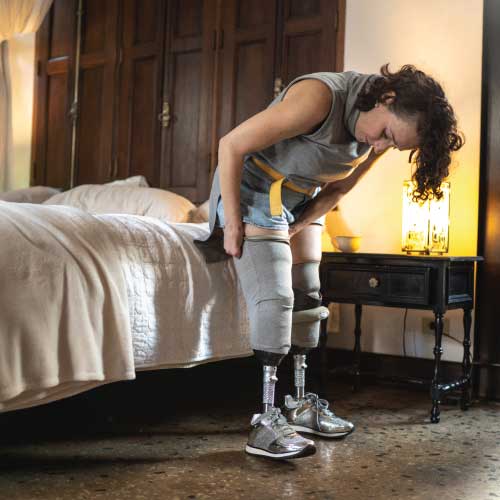Deep Neural Network Unlocks A Seamless Experience for Above-Knee Amputees with Powered Prosthetic Legs
Powered prosthetic legs are a promising option for individuals with above-knee limb loss. However, the technology behind existing powered prosthetic legs is still considered mainly unsafe and lacks the intuitiveness required to control them. So, researchers have turned to a new method for controlling a prosthetic leg—deep neural networks.

What is a deep neural network?
A neural network is a type of artificial intelligence modeled after the human brain. It can learn and adapt on its own.
The "deep" part of a deep neural network means that this network has a lot of layers and is complex.
How can it change the game?
Traditionally, controlling a prosthetic leg—even a powered one—requires a lot of mental effort. Users need to focus on every movement and manually adjust the controls to make the prosthetic leg move however they want.
With the deep neural network, researchers believe that powered prosthetic legs can learn and predict what the wearer wants to do based on their movements. This approach will make controlling the prosthetic leg easier and more intuitive. It also allows for a more natural gait, making it feel closer to a biological leg.
The study
Researchers developed a deep neural network model that generates an intuitive and seamless gait for the user. The model was created to transition across five ambulation modes: level-ground walking, ascending and descending ramps, and ascending and descending stairs. It was applied to an open-source bionic leg with a powered knee and ankle joint.
The researchers also added haptic feedback to the powered prosthetic leg, providing sensory information back to the user. This information includes pressure and position so the user gets a better sense of what the prosthetic leg is doing and where it is positioned in space.
The bionic leg was tested on six individuals with single above-knee limb loss.
Results
This study, published online by Cambridge University Press on September 28, 2022, found that using deep neural networks in powered prosthetic legs helped the study participants achieve more accurate and robust control of the bionic prosthetic leg. They could walk and perform other movements with greater flexibility and ease.
The study demonstrated the potential of deep learning techniques to transform the field of prosthetics, making it possible to create more advanced and intelligent prosthetic devices that can adapt to the user's needs and preferences.
The researchers also noted in the study the importance of involving prosthetic users in the design as well as testing of prosthetic devices. This ensures that engineers and prosthetists can meet the needs and expectations of those using the prosthetic limbs.
What's next for deep neural networks?
The researchers hope to make it widely available to above-knee amputees, but more work is still needed. For example, the neural network must be trained to accommodate different people's walking patterns and movements.
Overall, this study can provide valuable insights into the potential of advanced machine learning techniques to improve the lives of people with limb loss.











































































